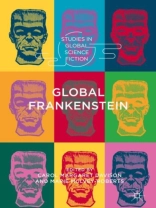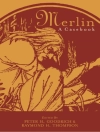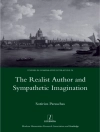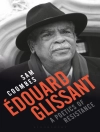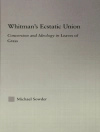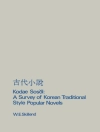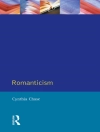Consisting of sixteen original essays by experts in the field, including leading and lesser-known international scholars, Global Frankenstein considers the tremendous adaptability and rich afterlives of Mary Shelley’s iconic novel, Frankenstein, at its bicentenary, in such fields and disciplines as digital technology, film, theatre, dance, medicine, book illustration, science fiction, comic books, science, and performance art. This ground-breaking, celebratory volume, edited by two established Gothic Studies scholars, reassesses Frankenstein’s global impact for the twenty-first century across a myriad of cultures and nations, from Japan, Mexico, and Turkey, to Britain, Iraq, Europe, and North America. Offering compelling critical dissections of reincarnations of Frankenstein, a generically hybrid novel described by its early reviewers as a “bold, ” “bizarre, ” and “impious” production by a writer “with no common powers of mind”, this collection interrogates its sustained relevance over two centuries during which it has engaged with such issues as mortality, global capitalism, gender, race, embodiment, neoliberalism, disability, technology, and the role of science.
Jadual kandungan
1. Introduction: Global Reanimations of
Frankenstein.- Part I
Frankenstein: Science, Technology, and the Nature of Life.- 2. The Gothic Image and the Quandaries of Science in Mary Shelley’s
Frankenstein
.- 3. Paracelsus and the ‘P[r]etty Experimentalism’: The Glass Prison of Science and Secrecy in
Frankenstein.- 4. Monstrous Dissections and Surgery as Performance: Gender, Race and the Bride of Frankenstein.- Part II
Frankenstein and Disabled, Indecorous, Mortal Bodies.- 5. ‘The Human Senses Are Insurmountable Barriers’: Deformity, Sympathy, and Monster Love in Three Variations on
Frankenstein.- 6. ‘We Sometimes Paused to Laugh Outright’:
Frankenstein and the Struggle for Decorum.- 7. Monstrous, Mortal Embodiment and Last Dances:
Frankenstein and the Ballet.- Part III Spectacular Frankensteins on Screen and Stage.- 8. ‘Now I am a Man!’: Performing Sexual Violence in the National Theatre Production of
Frankenstein.- 9. The Cadaver’s Pulse: Cinema and the Modern Prometheus.- 10. Promethean Myths of the Twenty-First Century: Contemporary
Frankenstein Film Adaptations and the Rise of the Viral Zombie.- Part IV Frankensteinian Illustrations and Literary Adaptations.- 11.
Frankenstein and the Peculiar Power of the Comics.- 12. Our Progeny’s Monsters:
Frankenstein Retold for Children in Picturebooks and Graphic Novels.- 13. Beyond the Filthy Form:
Illustrating Mary Shelley’s
Frankenstein.- Part V Futuristic Frankensteins/Frankensteinian Futures.- 14. The
Frankenstein Meme: The Memetic Prominence of Mary Shelley’s Creature in Anglo-American Visual and Material Cultures.- 15. Frankenstein in Hyperspace: The Gothic Return of Digital Technologies to the Origins of Virtual Space in Mary Shelley’s
Frankenstein.- 16. Playing the Intercorporeal:
Frankenstein’
s Legacy for Games.- 17. What
Was Man…? Reimagining Monstrosity from Humanism to Trashumanism.
Mengenai Pengarang
Carol Margaret Davison is Professor of English Literature at the University of Windsor, Canada and the author of History of the Gothic: Gothic Literature, 1764-1824 (2009) and Anti-Semitism and British Gothic Literature (Palgrave Macmillan, 2004). She recently edited The Gothic and Death (2017) and The Edinburgh Companion to the Scottish Gothic (2017) with Monica Germanà.
Marie Mulvey-Roberts is Professor of English Literature at the University of the West of England, Bristol, UK and author of Dangerous Bodies: Historicising the Gothic Corporeal (2016), winner of the Alan Lloyd Smith Memorial Prize. She has authored, edited, and co-edited over 30 books. Recently she made a film on Frankenstein for a MOOC (Massive Open Online Course) on the literary South West.
